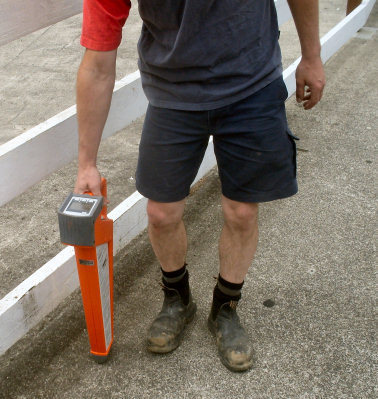Acoustical Leak Detectors
When liquids leak from a pipe or other carrying media buried underground, they emit a noise. Acoustic leak detectors are used to detect the noise that a leaking pipe makes in order to identify the leak’s location. This saves money as no widespread exploration or investigation has to be done to find the source of the leak.
Why Do Leaks Make Noise?
The noise that a leak from a pressurized pipe makes varies. Leaks produce a whoosh or hiss as they leave a pipe orifice and leave a slashing sound when flowing around a pipe. If a leaking pipe’s pressure is more than 30 psi, it produces a “hissing” noise. A leaking pipe may or may not produce other sounds depending on the type of fluid and pressure that the pipe is under.
What Factors Affect the Noise from a Leaking Pipe?
Acoustic leak detectors take advantage of several factors that are common among leaking pipes. These include the soil type, the compaction that the pipe is buried under, the pressure in the pipe, depth of soil covering the pipe, pipe diameter and mater, and surface cover on top the pipe (asphalt, concrete, dirt, or grass). The intensity of the leak is proportional to the pressure the pipe is under and the top cover and depth over the top of the pipe. Acoustic leak detectors have problems finding small leaks in pipes buried deeper than seven or eight feet.
How Do Pipes Convey Sound?
Metal, copper, and steel pipes convey the sound of leaks for hundreds of feet in all directions. Pipes that are made of PVC or asbestos-cement do not transmit sound as far, with detectable ranges being from 50 to 200 feet.
How Do Acoustic Leak Detectors Work?
Acoustic leak detectors are used to localize potential underground pipe leaks. A surveyor uses a monitoring system to locate a potential leak area by moving three to four feet at a time with an acoustic listening device. This device uses a microphone set at a constant volume to make measurements of the sounds detected from the ground, and displays results to mark the difference in sound output as the survey is conducted. If the loudness significantly increases at any point (s) along the survey route, then that location is identified as a spot to dig to verify the existence of a leak on the pipe.


Comments - No Responses to “Acoustical Leak Detectors”
Sorry but comments are closed at this time.